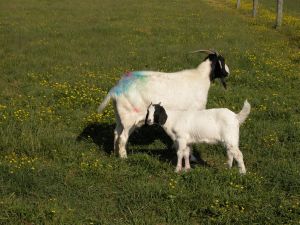Artificial Lighting and Melatonin
Light treatment to alter photoperiod response is a well-known synchronization and/or induction method for out-of-season breeding in the dairy goat industry. Artificial lighting is mostly employed for long day simulation, administered as 16 hours of daylight followed by eight hours of darkness. To simulate long days it is not necessary to provide the entire 16-hour light period, but treatment can be divided into the natural daylight period followed by an appropriately …


